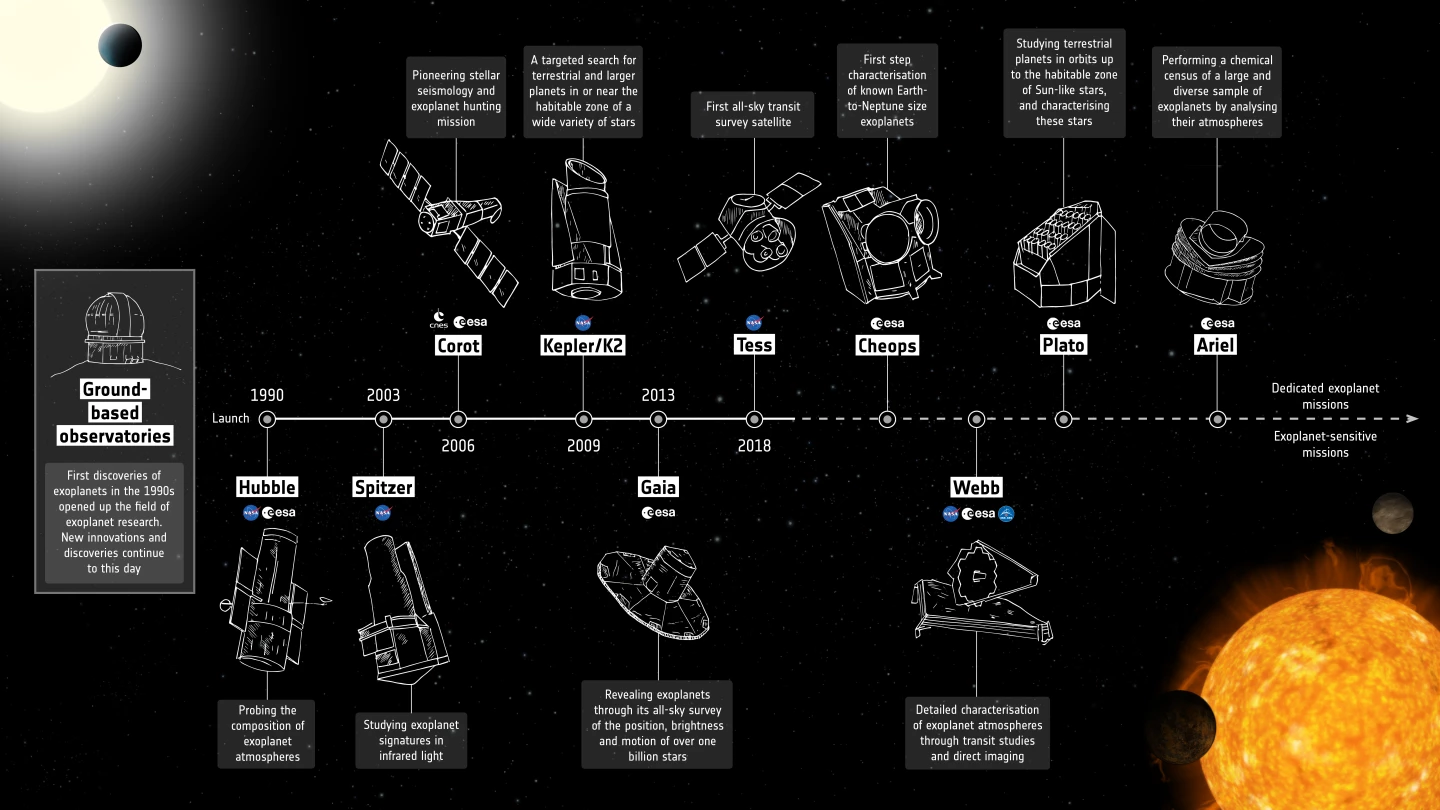ESA has given the go-ahead for its Atmospheric Remote-sensing Infrared Exoplanet Large-survey (Ariel) mission to progress out of the study phase and enter the implementation phase, with an industrial contractor to build the spacecraft to be chosen in mid-2021.
Though over 4,000 exoplanets have been found, with many thousands more candidates waiting to be confirmed, most of the analysis of these planets beyond our solar system has been on a fairly basic level. However, that's set to change as ESA and other space agencies bring online a new generation of exoplanet survey spacecraft.
Scheduled to launch in 2029 atop an Ariane 6 rocket from Kourou, French Guiana, Ariel will go into orbit around the second Sun-Earth Lagrange point, L2, about 930,000 mi (1.5 million km) from Earth, where it will conduct an infrared and visible light survey of about 1,000 various exoplanet atmospheres in order to determine their thermal profiles and chemical compositions.
According to the space agency, this will be the first mission to examine whether these factors are linked to the evolution of the planet's environment or if the host star is the dominant force. The mission will deal mainly with warm and hot planets, including super-Earths and close-orbiting gas giants with well-mixed atmospheres suitable for study.

Though industry bids for constructing Ariel have yet to be sought, the payload is already being planned around its one-meter (3.3-ft) cryogenic telescope and other instruments being produced by the Ariel Mission Consortium made up of over 50 institutes from 17 European countries, as well as elements provided by NASA.
The telescope will have spectrometers that will analyze target planet atmospheres as they pass in front of or move behind their host star, allowing the instruments to measure changes in the light curve by up to 100 parts per million relative to the star. In addition, the spectrographs returned will help scientists to seek out indicators of life, like water vapor, carbon dioxide, and methane, as well as detect seasonal variations.
“With Ariel we will take exoplanet characterization to the next level by studying these distant worlds both as individuals and, importantly, as populations, in much greater detail than ever before possible,” says ESA’s Ariel study scientist Göran Pilbratt.
The animation below shows how a light curve is measured in the transit method.
Source: ESA






